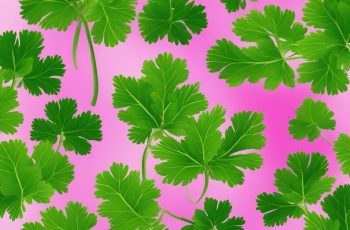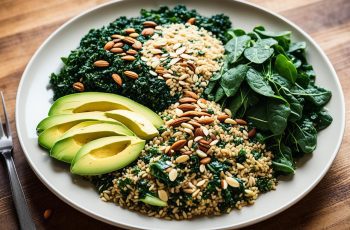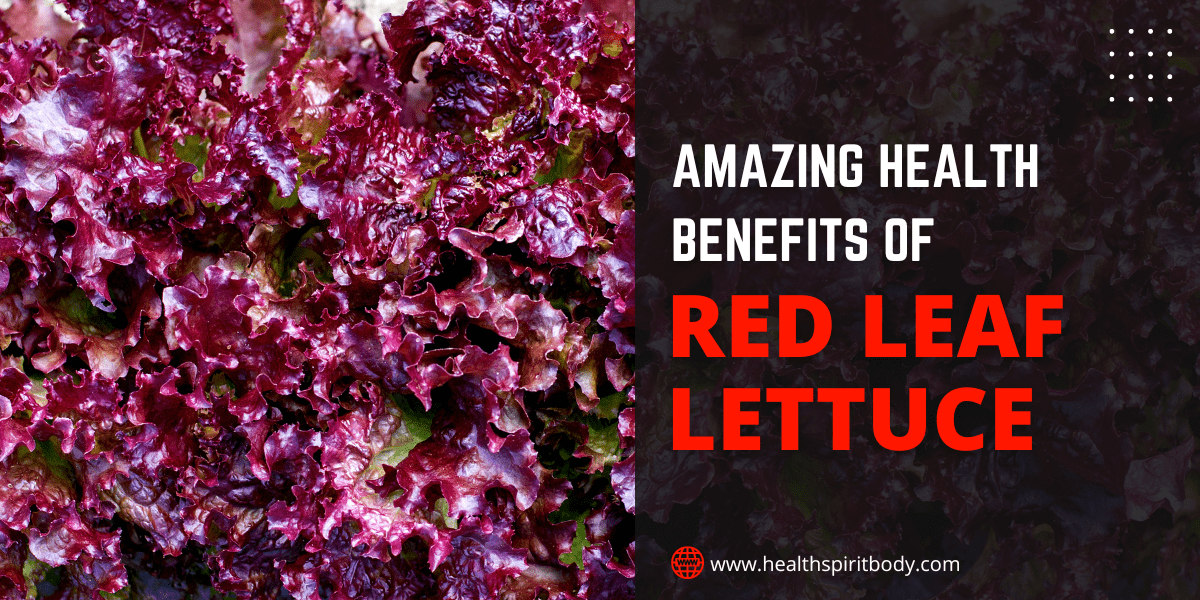
What comes to mind when you hear the phrase “red leaf lettuce?” Most likely, you imagine a dark green leafy vegetable with red veins. And while this is undoubtedly what red leaf lettuce looks like, there’s more to this humble plant than meets the eye.
Red leaf lettuce is jam-packed with nutrients and health benefits, making it a great addition to any diet. Curious to learn more? Read on for an in-depth look at the excellent health benefits of red leaf lettuce.
Overview of Red Leaf Lettuce
Lactuca sativa, the scientific name for red leaf lettuce, is the general name for dozens of different kinds of loose-leaf, semi-curled lettuces in the Asteraceae family. Red Leaf lettuces can thrive up to 30 centimeters tall and are among the most frequent types of lettuce grown worldwide. They are favored for their vivid colors, which are attributable to anthocyanins, a pigment in all red-colored food plants, and for their nature to continue producing new leaves when the outer leaves are removed. As a result, red Leaf lettuce is exceedingly adaptable and utilized in various culinary applications.
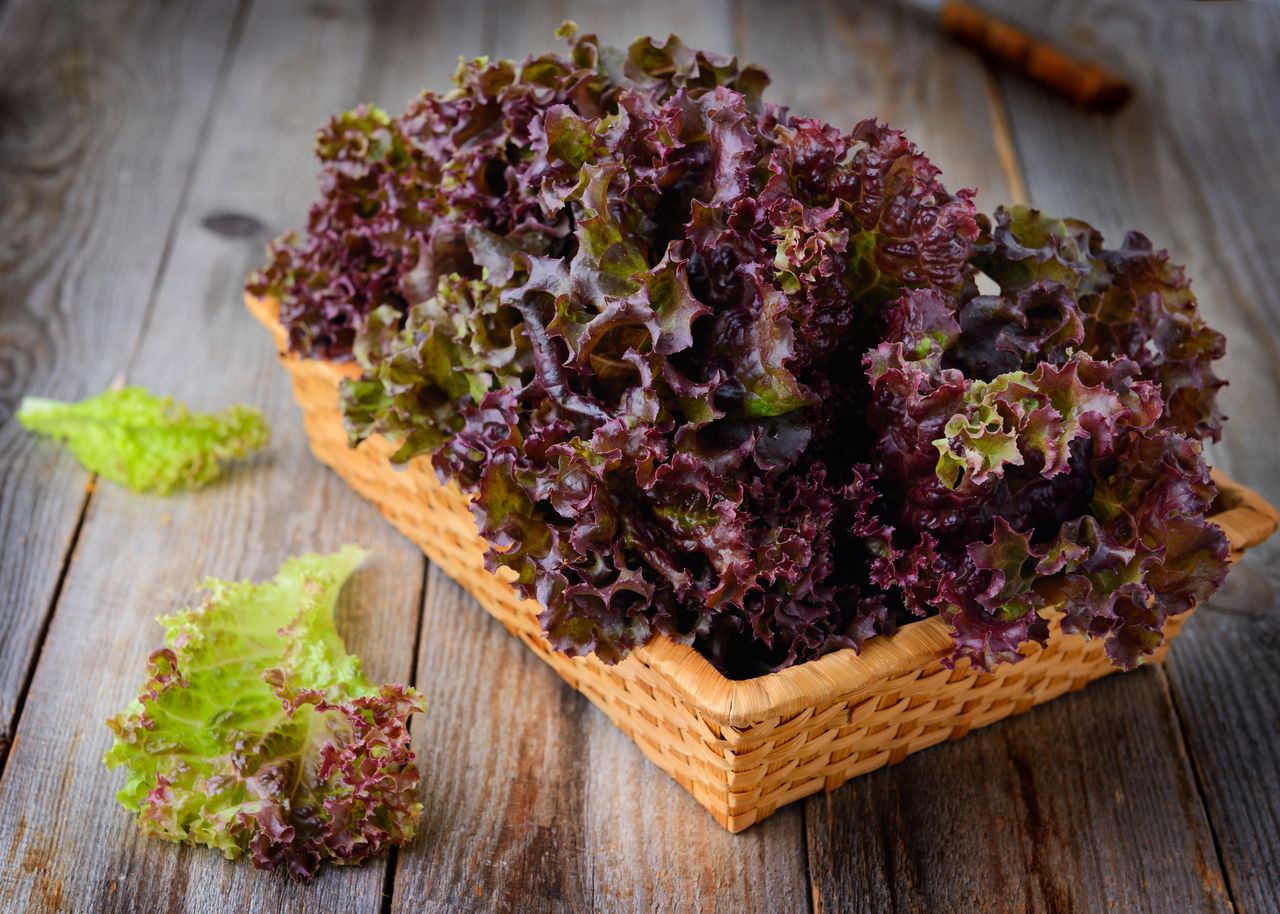
Nutritional Value of Red Leaf Lettuce
- Magnesium: 3% of the DV
- Calories: 11
- Protein: 1 gram
- Fat: 0.2 grams
- Potassium: 5% of the DV
- Fiber: 1 gram
- Manganese: 9% of the DV
- Folate: 8% of the DV
- Iron: 6% of the DV
- Vitamin C: 5% of the DV
- Thiamine: 4% of the DV
- Riboflavin: 4% of the DV
- Vitamin K: 149% of the Daily Value (DV)
- Vitamin A: 127% of the DV
- Vitamin B6: 4% of the DV
Health and Nutrition Benefits of Red Leaf Lettuce
Encourages Reproductive Health
Vitamin A, abundant in lettuce, has been demonstrated in a few animal experiments to be crucial for preserving reproductive health. For example, according to a rodent study, male rats with vitamin A deficiency were infertile.
According to another study, women who consumed insufficient amounts of vitamin A produced eggs of poor quality. However, consuming too much red leaf lettuce during pregnancy can be problematic. According to a study, excessive vitamin A can give newborn genetic abnormalities.

Extremely Hydrating
The body needs to stay hydrated for a number of reasons. It regulates body temperature, moisturizes joints, guards against infections, and enhances organ performance. A hydrated body also aids in delivering nutrients to various body parts, promotes brain function, improves digestion, prevents kidney stones, and maintains heart health. Because lettuce contains a lot of water, it is essential for keeping the body hydrated.
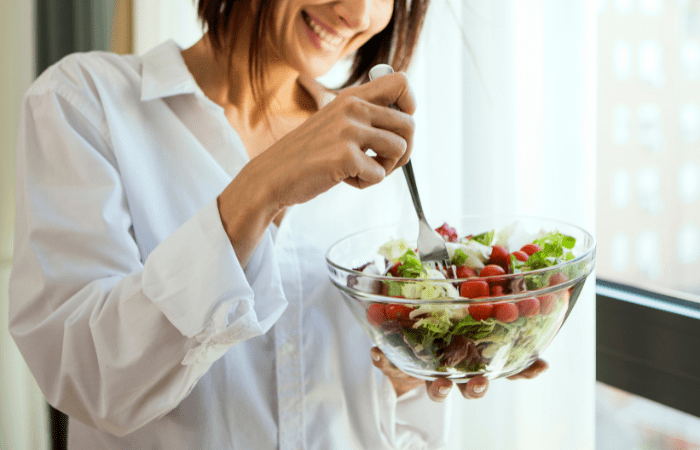
Cures Anemia
Additionally, red leaf lettuce contains substantial amounts of vitamin B6. According to a study, vitamin B6 encourages the creation of hemoglobin, which helps alleviate anemia. Even though your body is resistant to iron, vitamin B6 can treat anemia. Anemia symptoms were dramatically improved with as little as 75 mg of vitamin B6, according to research done on 56 pregnant women who were resistant to iron.

Packed With Potent Antioxidants
Red leaf lettuce is a type of lettuce that is packed with potent antioxidants. These antioxidants help to improve your overall health by fighting off free radicals. Free radicals are responsible for causing cell damage, which can lead to several severe health conditions.
Some of the most common health conditions caused by free radicals include cancer, heart disease, and stroke. By consuming foods high in antioxidants, you can help prevent these health conditions from occurring.

May Reduce Blood Pressure
Medical conditions like high blood pressure are prevalent. Consuming enough red leaf lettuce is a fantastic strategy to deal with this issue. A new study found that meals high in potassium can help regulate blood pressure and maintain it at acceptable ranges. In addition, research has shown that potassium helps lower the impact of sodium in circulation and aids blood vessel dilation, which lowers blood pressure.
The idea that consuming enough red leaf lettuce can assist in lower blood pressure levels has been supported by another study.

May Help With Weight Loss
For several reasons, red leaf lettuce can aid in your efforts to lose weight. Red leaf lettuce has a low calorie count, to begin with. A low-calorie food lowers calorie intake, which in turn causes weight loss. At the same time, red leaf lettuce has a lot of fiber.
According to a study, fiber makes the body feel satisfied, which lowers calorie intake. Additionally, lettuce contains a lot of water. According to research, eating more foods with more water will help you lose weight.

Simple to Include in Your Diet
Redleaf lettuce is a simple yet versatile vegetable that can easily be incorporated into any diet. Whether you’re looking for ways to add more salads to your routine or want something different for your next wrap material, give red leaf lettuce a try! With its mild flavor and nutrient-rich properties, this type of lettuce will become a new staple in your kitchen.

Maintains Healthy Eyes
Vitamin A content is high in red leaf lettuce. Vitamin A is essential for preserving eye health and safeguarding the eyes. This is because your eyes transform light into electrical signals subsequently transmitted to your brain. The brain then interprets the image as a result of this process.
The process of turning light into electrical signals depends heavily on vitamin A. According to a study, vitamin A plays a significant role in reducing night blindness. According to a different study, getting enough vitamin A can help slow vision loss as people age.

Potentially Maintains Heart Health
Magnesium and potassium are abundant in red leaf lettuce. Red leaf lettuce is so crucial for preserving a healthy heart. According to research, magnesium and potassium support a healthy heartbeat. The heart’s muscles can contract and relax easily when the heartbeat is healthy.
Other studies have also supported the same. However, a lack of magnesium and potassium might lead to some heart diseases. Numerous studies cover coronary heart disease, high blood pressure, and in some difficult situations, heart failure.

Strengthens Bone Health
Your bone health can be improved by eating red leaf lettuce. According to a study, people who eat a vitamin A diet have stronger bones than those who don’t. The study also found that people who consumed more vitamin A supplements had a 6% lower risk of fractures. However, minerals other than vitamin A also play a critical role in preserving general bone health, most notably vitamin D.

Reduces the Risk of Cancer
As a cancer preventive measure, red leaf lettuce is also beneficial. Antioxidants are necessary to shield the body from free radicals that might cause cancer. According to a study, having too many free radicals in your body might damage it and cause many ailments. An antioxidant known as beta carotene is abundant in red leaf lettuce. Red leaf lettuce also has a considerable quantity of vitamin C, a potent antioxidant. Vitamin C aids in the prevention of aggressive cervical cancer in women, according to a controlled study.
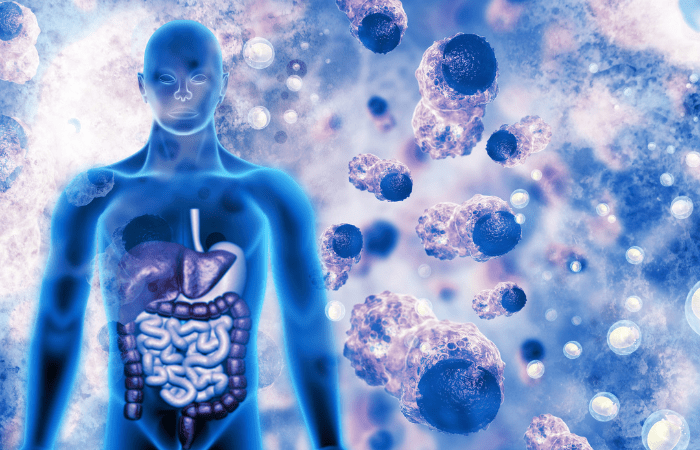
Taste of Red Leaf Lettuce
Red Leaf lettuce is small to medium size and develops into an elongated shape with a narrow base and fans out to a top that is wide, curly, and loose. The sensitive, smooth, broad leaves are branched out on all sides from a central stem and have numerous curls and frills.
Dark burgundy to scarlet marks the edges of the leaves, which turn pale green and white as they become the delicious stalk. When you scratch the stalk of red leaf lettuce, it has a sweet or bitter aroma. The leaves taste earthy, somewhat sweet, or semi-bitter, with hints of hazelnut. As opposed to young leaves, bitterness frequently appears in mature leaves.
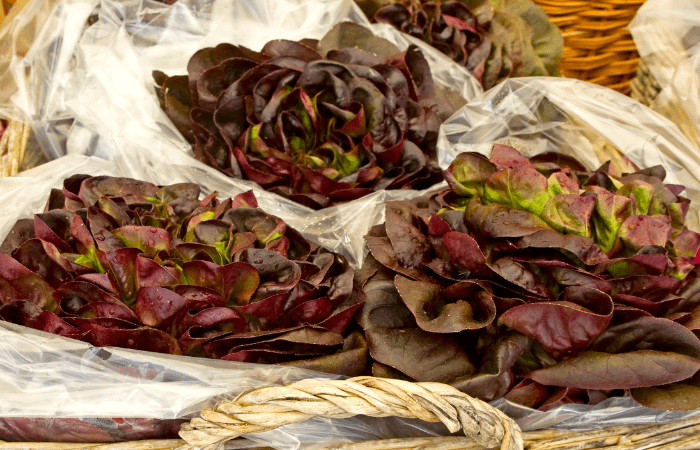
Precaution
Even though red leaf lettuce is generally safe to eat, there is one safety measure to take. Make sure to thoroughly wash the lettuce many times before eating. Washing is required because pests are drawn to lettuce. In addition, red leaf lettuce is sprayed with many pesticides to safeguard it on the farm. These pesticides can be hazardous to your health and induce anxiety, nausea, dizziness, and cramping if they are not thoroughly cleansed.
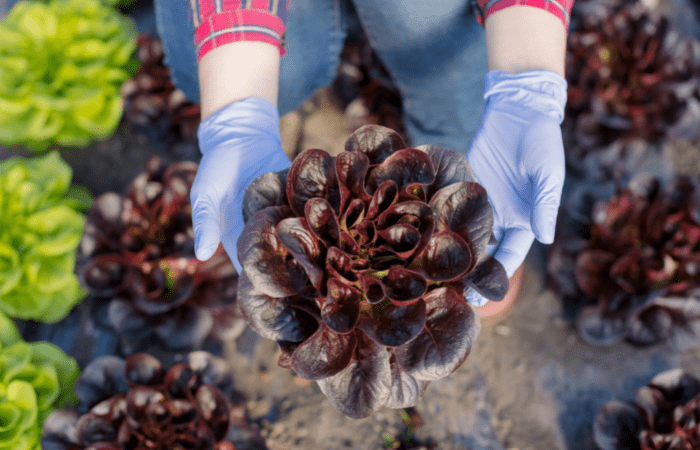
Potential Side Effects of Red Leaf Lettuce
1. Allergies. Some people may be allergic to red leaf lettuce. If you experience any symptoms after eating red leaf lettuce, such as hives, swelling, or difficulty breathing, seek medical attention immediately.
2. Digestive issues. Red leaf lettuce is high in fiber. This can be beneficial for some people, but for others, it can lead to gas and bloating. If you’re suffering from digestive issues after eating red leaf lettuce, try removing it from your diet or reducing your intake.
3. Pesticides. Like all vegetables, red leaf lettuce can be contaminated with pesticides. Be sure to wash your lettuce thoroughly before eating it to remove any potentially harmful chemicals.
4. Salmonella. Because red leaf lettuce is often eaten raw, there is a risk of contracting salmonella if the lettuce is not washed correctly or if it comes into contact with contaminated water during cultivation. To avoid this foodborne illness, always wash your hands thoroughly after handling raw lettuce and make sure that the lettuce is thoroughly rinsed before eating it.

How to Select and Store Red Leaf Lettuce
When selecting red leaf lettuce at the grocery store or farmers market, look for leaves that are crisp and free of brown spots or wilting. Avoid any heads of lettuce that have yellowing or mushy leaves. Once you get the lettuce home, store it in the crisper drawer of your refrigerator. Red leaf lettuce will stay fresh for up to five days when stored properly.
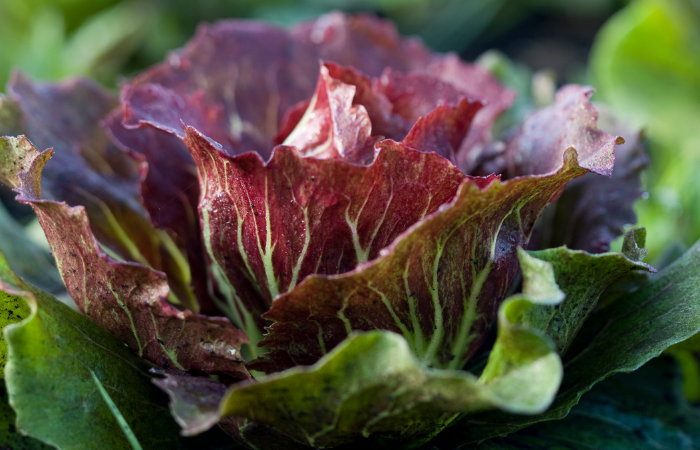
How to Consume Red Leaf Lettuce
Here are some tips on how to consume red leaf lettuce so that you can get the most out of its health benefits.
1. Add it to a salad. One of the simplest ways to consume red leaf lettuce is to add it to a salad. This will help you increase your intake of vitamins A and K and folate. When consumed this way, you can also get a decent amount of fiber from red leaf lettuce. Just be sure to dress your salad lightly – too much dressing can negate the health benefits of the lettuce.
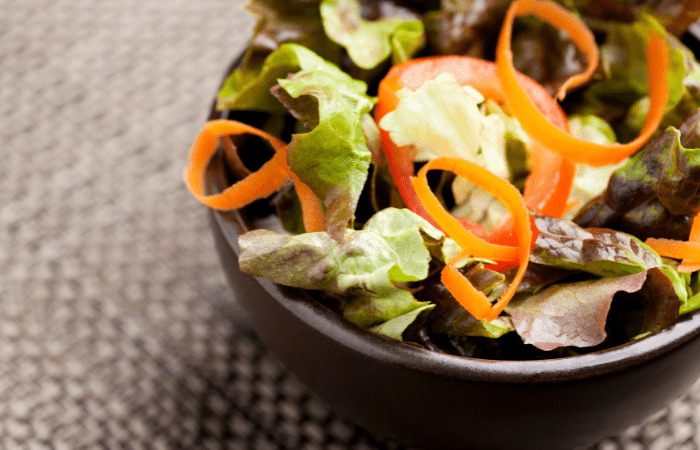
2. Use it as a wrap. Another easy way to consume red leaf lettuce is to use it as a wrap for sandwiches or burritos. This is a great way to get more vitamins A and K, calcium, and iron. Just be sure not to overload your wrap with too much filling – otherwise, you’ll consume more calories than you would if you just ate the sandwich or burrito without the lettuce wrap.
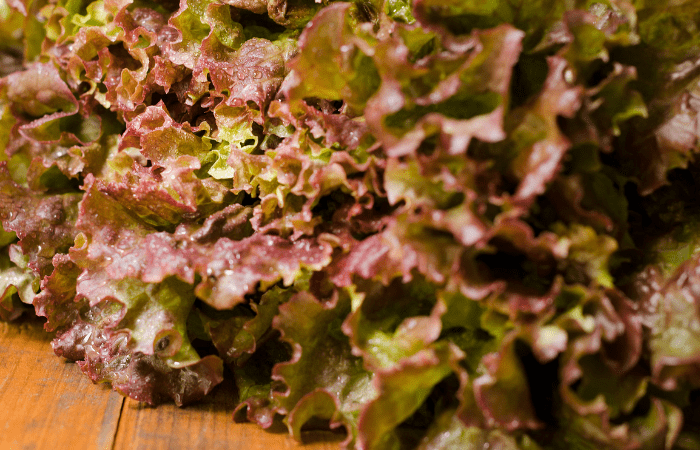
3. Saute it. If you’re looking for a more flavorful way to consume red leaf lettuce, then sauteing it might be the way to go. This cooking method will help bring out the natural sugars in the lettuce, making it taste sweeter. In addition, you can add other vegetables or proteins to your sauteed red leaf lettuce dish to make it more hearty and filling. Just be sure not to overdo it on the oil – too much oil can negate the health benefits of the veggies.
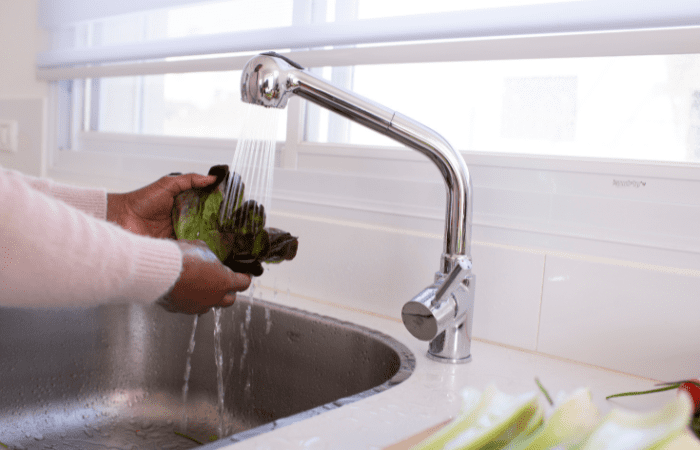
4. Star of your dish. Red leaf lettuce is also delicious when enjoyed on its own. If you’re looking for a light and refreshing side dish, try roasting or grilling red leaf lettuce. The heat brings out the lettuce’s natural sweetness and creates an irresistible crispy texture. For extra flavor, top your grilled lettuce with Parmesan cheese or lemon juice before serving. You can also use red leaf lettuce to make homemade chips! Simply cut the leaves into thin strips, coat them with oil and seasoning, and bake in the oven until crisp. Enjoy as is, or dip them in your favorite dips and sauces.
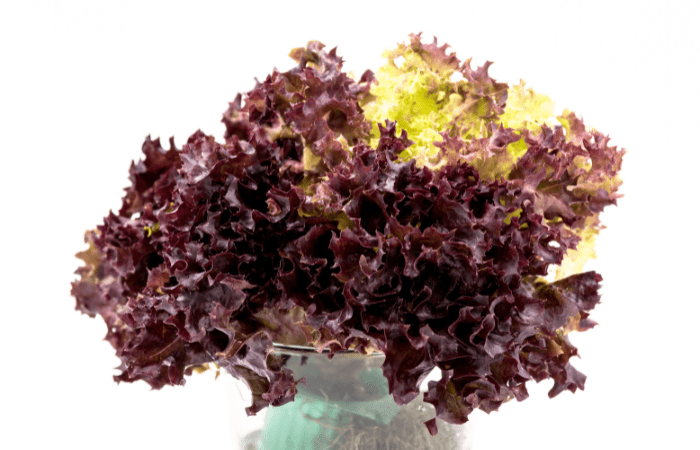
Final Thoughts
Red leaf lettuce is a nutritious and versatile vegetable that can be enjoyed in various ways. This leafy green can add valuable nutrients to your diet, from salads to wraps. Red leaf lettuce is an excellent source of vitamins A and K and folate. It’s also a good source of fiber, calcium, and iron. Red leaf lettuce is also low in calories, making it a great choice for those watching their weight. So next time you’re at the grocery store, pick up a head of red leaf lettuce. Your body will thank you for it!
Frequently Asked Questions (FAQs)
Is red leaf lettuce healthy?
Red leaf lettuce is a nutrient-dense vegetable. Vitamins A and K, as well as antioxidants, are particularly abundant. Additionally, it might aid in weight loss, reduce blood pressure, and improve heart health. You can easily add red leaf lettuce for more taste and nutrition to your favorite sandwiches or salads.
How does red leaf lettuce taste?
The aroma of red leaf lettuce is bitter-sweet. This is because the stalk has scratches on it. Unlike young leaves, this bitter taste frequently appears in mature leaves. The leaves will naturally taste sweet and semi-bitter, with faint hints of hazelnut.
Is it OK to eat red lettuce?
However, Thrive Cuisine affirms that reddish lettuce is still suitable for consumption. The lettuce will have lost a significant portion of its flavor and nutritional content during this step, but the enzymes present will not harm your digestive system. Additionally, it doesn't exactly look tasty.
Can I eat lettuce every day?
Most people can safely consume lettuce in general. It is not a usual allergen. Consuming lettuce excessively is not a huge issue because it is low in calories.


